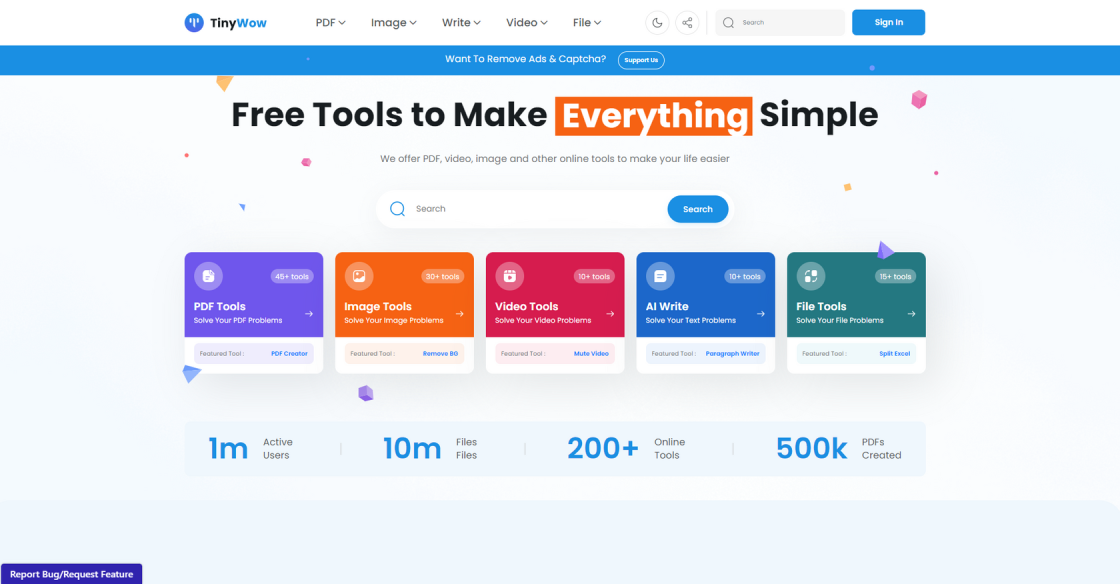

Quill by Narrative Science is a cutting-edge tool that effectively generates actionable insights from structured and unstructured data. This powerful software uses advanced algorithms to analyze complex data sets and produce human-like language that can be easily understood by individuals without technical expertise. With the ability to process large amounts of information in real-time, Quill provides valuable insights that can help businesses make informed decisions and stay ahead of their competitors. In this article, we will explore the features of Quill and how it can benefit organizations in various industries.
Amazon Web Services Sagemaker is a revolutionary platform that enables developers and data scientists to create, train, and deploy machine learning models with ease. With its user-friendly interface and powerful tools, Amazon SageMaker empowers users to streamline the process of building and deploying machine learning models quickly and efficiently. Whether you're a seasoned data scientist or a beginner, Amazon SageMaker provides an accessible and intuitive solution for your machine learning needs. In this article, we'll explore the many benefits of Amazon Web Services Sagemaker and how it can help you take your machine learning projects to the next level.
IBM Watson Studio and Machine Learning is an innovative technology that is revolutionizing the way organizations operate. It is an AI assistant platform designed to support teams in applying machine learning to their business operations. With its advanced capabilities, IBM Watson Studio and Machine Learning can help organizations improve their decision-making processes, enhance efficiency, and streamline workflows. This platform is ideal for businesses looking to harness the power of artificial intelligence and stay ahead of the curve in their respective industries.
Huawei HiAI Engine is an innovative toolkit that empowers mobile device AI capabilities. This comprehensive engine comprises modules for natural language processing (NLP) and computer vision (CV), providing optimized development environments and SDKs. The Huawei HiAI Engine is at the forefront of enhancing the user experience by enabling mobile devices to perform advanced AI functions. With this toolkit, developers can seamlessly create intelligent applications that leverage the power of AI, thereby delivering enhanced user experiences. This article will explore the key features of Huawei's HiAI Engine and how it is transforming the mobile device industry.
Sapphire AI is a cutting-edge technology that has revolutionized the way businesses and organizations operate. It is an AI solution that leverages data to provide valuable insights and help decision-makers make informed decisions. Sapphire AI has emerged as a powerful tool for businesses looking to stay ahead of their competition by understanding their market and customers better. With its advanced capabilities, Sapphire AI has become a must-have for businesses and organizations seeking to optimize their operations and improve their performance. In this article, we will explore the features and benefits of Sapphire AI and how it can help businesses gain a competitive advantage.
IBM PowerAI is a comprehensive deep learning and data science software platform designed to help businesses and organizations unleash the full potential of AI. With its powerful, flexible, and scalable architecture, PowerAI offers a wide range of tools, frameworks, and libraries for building, training, and deploying complex AI models. From natural language processing to computer vision, PowerAI provides the necessary tools to extract insights from any type of data. Whether you are a researcher or a data scientist, IBM PowerAI offers an array of features that can help you accelerate your work and stay ahead of the competition.

AI Roguelite
AI Roguelite on Steam

Stable Diffusion Photoshop Plugin
Explore the best Photoshop apps - Adobe Photoshop

Befunky
Photo Editor | BeFunky: Free Online Photo Editing and Collage Maker

Socratic By Google
Get unstuck. Learn better. | Socratic

TinyWow
Free AI Writing, PDF, Image, and other Online Tools - TinyWow

Writer
Writer - Generative AI your people will love

QuickTools By Picsart
Comprehensive Online Image Tools | Quicktools by Picsart

Landr
LANDR: Creative Tools for Musicians
Dato is a powerful open-source machine learning library designed to enable easy building, deployment, and maintenance of predictive applications. This cutting-edge tool provides developers with a flexible framework for creating robust machine learning models that can be integrated seamlessly into various applications. Dato's intuitive interface allows users to perform complex data analysis tasks and build sophisticated algorithms with ease. With its extensive range of features, Dato is an excellent choice for developers who want to build efficient and high-performance predictive applications. Whether you're working on a small-scale project or a large-scale enterprise application, Dato provides the necessary tools and resources to create powerful machine learning models that deliver accurate and reliable results. With its open-source nature, Dato is accessible to all, enabling developers to leverage its capabilities to the fullest extent possible. In this article, we'll explore the key features and benefits of Dato, and why it's one of the most popular machine learning libraries among developers today.
Dato is an open source machine learning library that enables you to create, deploy, and maintain predictive applications with ease.
Dato offers features such as collaborative filtering, classification, regression, clustering, and graph analytics.
Dato supports Python, C++, and Java.
Yes, Dato provides tools for real-time data processing and analysis, making it suitable for real-time applications.
Yes, Dato can handle large datasets and is built to scale with your data needs.
Dato provides easy-to-use APIs and extensive documentation, making it accessible to developers with varying levels of experience.
Yes, Dato is open source and available for free under the BSD license.
Any business that wants to leverage machine learning to make predictions, recommendations, or gain insights from their data can benefit from using Dato.
Yes, Dato provides support through its community forums and professional services for enterprise customers.
You can get started by downloading Dato from its official website and following the tutorials and examples provided in the documentation.
| Competitor | Description | Key Features |
|---|---|---|
| TensorFlow | An open source machine learning framework | High-performance numerical computation, flexible architecture, easy model building |
| PyTorch | An open source machine learning library | Dynamic computational graphs, easy debugging, seamless integration with Python |
| Scikit-learn | A machine learning library for Python | Simple and efficient tools for data mining and data analysis, built-in models for classification, regression, clustering |
| Keras | An open source neural network library | User-friendly API, modular building blocks for creating complex models, supports both convolutional and recurrent neural networks |
Dato is an open source machine learning library that has gained popularity in recent years. It offers a simple and intuitive way to build, deploy, and maintain predictive applications. If you are interested in data science and machine learning, here are some things you should know about Dato:
1. Dato provides a high-level API for building machine learning models. It supports popular algorithms such as regression, classification, clustering, and deep learning. With Dato, you can train models on large datasets and use them to make predictions on new data.
2. Dato is designed to be easy to use. It provides a user-friendly interface that allows you to perform common machine learning tasks with just a few lines of code. It also includes pre-built models and tools that can help you get started quickly.
3. Dato is built on top of the popular Python programming language. This means that you can use all the features and libraries available in Python to enhance your machine learning applications. You can also integrate Dato with other Python-based tools and frameworks.
4. Dato is scalable and can handle large datasets. It uses distributed computing and parallel processing to speed up the training process. This makes it ideal for applications that need to process massive amounts of data.
5. Dato is open source and free to use. This means that you can download and use it without any licensing fees. You can also contribute to the development of the library by submitting bug reports, feature requests, or code contributions.
In conclusion, Dato is a powerful machine learning library that can help you build predictive applications with ease. It provides a simple yet comprehensive API, is scalable and can handle large datasets, and is open source and free to use. Whether you are a data scientist, developer, or student, Dato is definitely worth checking out.
TOP